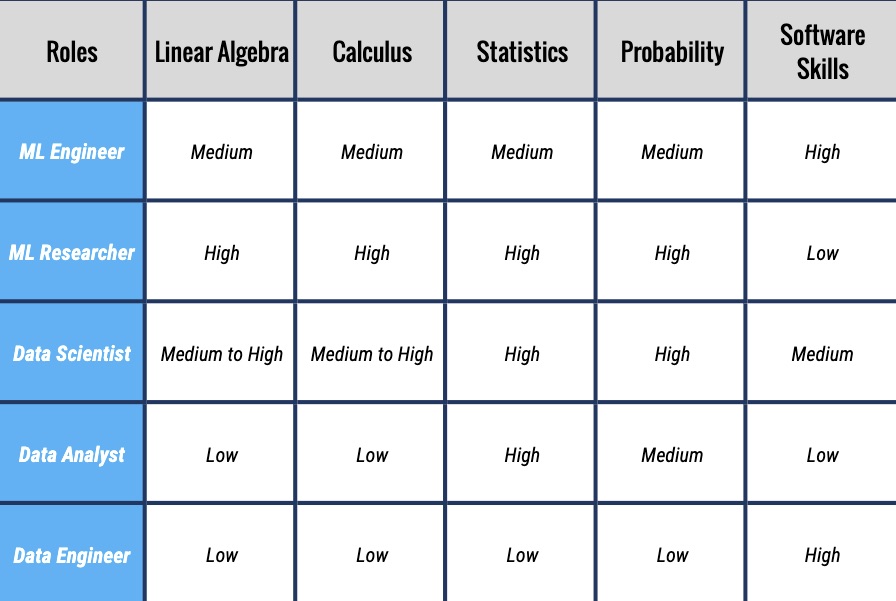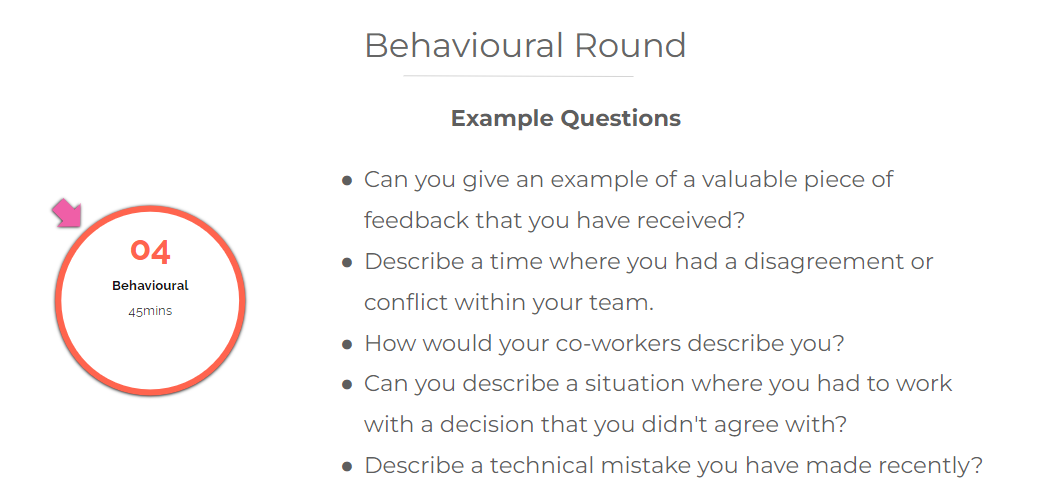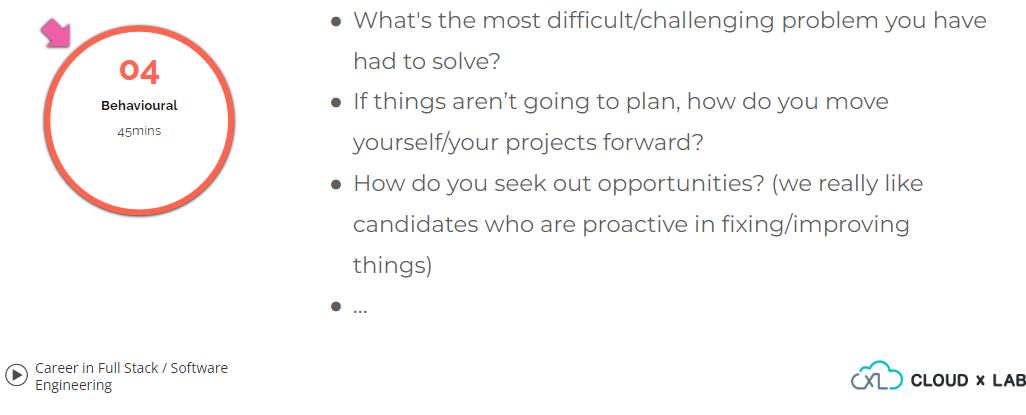Machine Learning is the most rapidly growing domain in the software industry. More and more sectors are using concepts of Machine Learning to enhance their businesses. It is now not an add-on but has become a necessity for businesses to use ML algorithms for optimizing their businesses and to offer a personalised user experience.
This demand for Machine Learning in the industry has directly increased the demand for Machine Learning Engineers, the ones who unload this magic in reality. According to a survey conducted by LinkedIn, Machine Learning Engineer is the most emerging job role in the current industry with nearly 10 times growth.

But, even this high demand doesn’t make getting a job in ML any easier. ML interviews are tough regardless of your seniority level. But as said, with the right knowledge and preparation, interviews become a lot easier to crack.
In this blog, I will walk you through the interview process for an ML job role and will pass on some tips and tactics on how to crack one. We will also discuss the skills required in accordance with each round of the process.
Note:-If you are new to the field of machine learning, kindly go through Your learning path in ML first. Also, if you are currently working in some other field and want to make a career transition to Machine learning, then career transition into Data Science can help you a lot.
Also, this blog is based on the webinar: Top Machine Learning Interview Questions for MAANG. We discussed on-
- The hiring process in MAANG companies.
- Why Machine Learning is important for technical job roles?
- Strategy for preparing and appearing in MAANG interviews.
- What type of Machine Learning questions can be expected in an interview?
- What is the approach to solving the Machine Learning interview questions and how efficient the solution should be?
- Tips and tricks to crack tech interviews in MAANG companies.
- Resources to follow.
So, you can take a look at it for more info. For future webinars, check out: CloudxLab Events. Now let’s come back to our topic.
Hiring Process
Whether you are applying for the role of a Machine Learning Engineer, Data Scientist, or any other ML-related role (such as Computer Vision Engineer or NLP engineer), the hiring process is generally the same with some variability in the skill set asked. For example, ML engineers may need more coding knowledge in comparison to Data scientists. In contrast, data scientists may need more analytical knowledge than ML engineers. But overall, both have to generally pass through the same rounds. So let’s walk through each of the rounds during the interview process.

Round 1: Screening Round
The screening round is the first round for which you may appear during the hiring process. This is a non-technical round of duration of approximately 15-20 mins conducted by a recruiter or a hiring manager. The objective here is to check the minimum fitness of the candidate for the company.
Here, you are asked about yourself, your work history, qualifications, etc. The questions are generally based on your resume. The candidate is also given an idea of the company, job role and responsibilities.
Sometimes, as a quick filter, the recruiter might ask you very basic questions such as how much is two to the power ten or what is overfitting.
Strategy
- Do not lie on your resume. You will be easily caught.
- Stay calm and honest.
- Listen very carefully to whatever is recruiter speaking. If possible make your notes.
Round 2: Algorithm Design Round
The algorithm design round commonly called, the coding round is the second round conducted during the process. This is done to filter the best out of the best candidates. The main objective behind this round is to test your ability to write code to solve problems and optimize your code further.
This round can be conducted in two ways:-
- Competitive Coding– It is conducted either on the company’s platform or on a common platform such as LeetCode, HackerRank, or CodeChef. Here, you are given some coding questions, which you have to solve in the pre-decided time period. The questions vary in their level of difficulty. There is no involvement of the interviewer here.
- Interview Coding– It is conducted during the interview. Here, the interviewer gives you a series of questions (generally 2-3) and observes you while you write up the code. He observes your problem-solving approach, skills, fluency, and practice during the process.
For data science job roles, interview coding is usually preferred.
Most companies initially conduct competitive coding round to filter out the good candidates and then conduct the interview coding round for the qualified candidates.
Skills
- Learn a programming Language
- Preferably Python – Faster to code
- Check the Python course at CloudxLab
- Learn Data Structures & Algorithms
- Learn to calculate memory and time complexity
- Learn Binary Searching, Dictionaries, etc
- Learn Lists, Dynamic Programming, Trees, graphs, etc.
Strategy
- Run down the test inputs and outputs
- Explain a very simple brute-force approach
- Optimize your code
- Communicate – All the time
- Seek hints from the interviewer

How to prepare – references?
- Book:
- Websites:
Note: This round is common for every Computer Science job role. Whether it be a full-stack developer, an app developer, or a Data Scientist, problem-solving, DSA, and programming are the basic skills required in every CS job role.
Round 3: Machine Learning Round
The candidates who qualify in the coding round are given the opportunity to appear in the Machine Learning interview round. Now, this is where your Machine Learning knowledge is tested. This round generally tests your theoretical knowledge and how much grip you have on ML concepts.
Skills
- Understanding of mathematical concepts(basics)-
- Linear Algebra
- Calculus
- Probability
- Statistics
- ML Libraries– such as Keras, Numpy, Pandas, Scikit-learn, etc.
- Machine learning Concepts
- Supervised learning Algorithms
- Regression
- Classification
- The most commonly asked questions are on- Linear Regression, Logistic Regression, Decision Trees, SVM, KNN, Naive Bayes, and Ensemble Learning methods.
- Unsupervised learning Algorithms
- Clustering
- Principal Component Analysis
- Supervised learning Algorithms
- Deep Learning Concepts
- Artificial Neural Networks(ANN)
- Convolutional Neural Networks(CNN)
- Recurrent Neural Networks(RNN)
- Reinforcement Learning
- Miscellaneous Concepts:
- Feature Engineering
- Dimensionality Reduction
- Data preprocessing and visualization
- Model development Pipeline
- Concepts such as loss functions, optimizers, overfitting/underfitting, regularization, bias-variance tradeoff, error metrics, correlation, etc
The above are the skills required to get a role in the data science field. Now, up to what level you should know these concepts totally depends on the role you are applying to. For example, if you are applying for the role of a Computer Vision Engineer, then questions will include advanced topics and algorithms of CNN too such as YOLO, R-CNN or RetinaNet, etc. If you are applying for the Machine Learning engineer job role, then only a basic understanding of mathematical concepts will be tested. On the other hand, for a data scientist, a little advanced understanding of mathematical concepts will be required. And for an ML researcher, a much-advanced understanding of mathematical concepts will be required.

Also, make sure you go through the job requirements and identify specific topics of ML required so you can emphasize them more.
Here, the questions can be of two types: direct and indirect.
Direct conceptual questions include questions such as:
- What is the meaning of Overfitting/Underfitting in Machine learning?
- How to handle missing data in a dataset?
- Discuss the bias-variance tradeoff.
- What do you understand by Neural Networks?
- Explain True Positive, True Negative, False Positive, and False Negative in the Confusion Matrix
On the other hand, indirect conceptual questions include questions such as:
- If your model performs well on the training data but is poor on the validation data, what can you conclude from it?
- Which ML/DL model will be most suitable if you have a huge amount of data and accuracy matters most to you?
- You are given a data set. The data set contains many variables, some of which are highly correlated and you know about it. What will be your first step in feature engineering toward such data?
You can check out some most commonly asked questions in interviews during this round at Top ML interview questions with solutions.
Strategy
- Ask questions to get clarity.
- Answer the questions a little brief.
How to prepare – references?
- Follow this course:
- Top ML interview questions with solutions
- Book:
Round 4: ML Design Round or ML Case Study Round
This is the fourth round in the hiring process. It is also sometimes combined with the third round. In this round, you are given a case study problem of machine learning along the lines of Kaggle which you have to solve. This round is more important for engineering job roles. The main objective of this round is to assess your ability to build models to solve business problems in an end-to-end manner and to examine your thinking process, strategy and ability. It is an in-depth, detailed examination of a particular case (or cases) within a real-world context.
This round can be conducted in two ways: Pipeline design and model design.
Pipeline design-
Here, you are given a real-world business problem and are then asked to design a detailed pipeline for the project in an hour. It is conducted during the interview and is generally a discussion regarding the problem between the candidate and the interviewer. It includes what data preprocessing techniques will you use, which algorithm will you use, which metric will you use, etc.
The more important question here becomes- ‘Why?’ The interviewer will keep on continuously asking the question “WHY?” at every step. Suppose you choose SVM for the problem. So, the interviewer will ask Why SVM? Why not Decision Trees or Neural Networks? And the conversation will keep on touching the deeper concepts.
Model design-
Here, you are provided with real-world data and asked to build a model in an end-to-end manner within a predefined time period. This can be either conducted on a platform such as Kaggle or you are directly given the data and are asked to build the project in your local machine and then send the code(obviously with comments explaining different parts) to the recruiter. The main objective behind this is to examine your practical knowledge.
Of the above two ways which way is chosen totally depends on the company, you are applying for.
Some of the commonly asked questions during this round are:
- Build a product recommendation such as Amazon.
- Say, you have months of recording of the Big Boss show. How would you create an interesting movie of 5 minutes?
- How would you build a system that gives place recommendations like Google Places?
- Say, on Facebook, you have data about who RSVPed previously on various Facebook events. Do you want to build a system that gives recommendations of events to users?
- Build a system to auto-categorize a ticket in a ticketing system.
- Build a model that automatically generates the title for a production event.
We will cover how to approach these questions in the next blogs.
Strategy
- Ask questions to get clarity.
For example, the problem is- How would you detect fake news on social media? So, you can start with asking questions such as-
- When you say social media, does it mean all the apps available on the internet like Facebook, Instagram, Twitter, YouTube, etc.?
- Does the analysis include news titles? Does the news description carry significance?
- As these platforms contain content from multiple languages? Should the analysis be multilingual?
- Understand the end objective
- Understand the metrics
- State your assumptions
- Get clarity on the baseline
- Design the project
- Explain the tradeoffs
- Optimize it
- Deploy it
- Talk while doing it.
How to prepare – references?
- Participate in Machine Learning hackathons.
- Do as many end-to-end projects as you can. Check out some guided projects at Guided projects.
- Things to consider while building an ML project
Round 5: System Design Round(For senior roles)
This round is conducted for senior job roles. The objective here is to test your overall understanding of :
- Building a web service
- A client
- Software Design
- Scalable Design – Distributed Computing
- Etc.
Strategy
- Ask questions to get clarity
- Understand the end objective
- Functional Requirement
- # of users per month, concurrent
- Storage requirement, TPS
- Constraints
- Discuss a design for small scale (Not Optimal)
- Scale the design
- Discuss Trade-Offs
How to prepare – references?
- How to build a webapp using Django
- Big Data with Hadoop & Spark
- Focus on learning architectures of various components – Zookeeper, HDFS, YARN, HBASE etc
- Learn Linux
- Learn how to convert a logic into map-reduce (Spark)
- Learn to process stream of data from kafka
- Very Good reading list: checkcheckzz/system-design-interview
Round 6: Behavioural Round
At last, comes the behavioral round. It is a non-technical round conducted by an Engineering Manager or HR. The main objective here is to understand if you really are culturally fit.
You are assessed in various areas such as:
- Intrinsic motivations
- Empathy
- Ability to be proactive
- Perseverance works past obstacles
- Able to work in an unstructured environment
- Conflict resolution – How you deal with conflict and disagreements with colleagues and managers.
- Growth
- Communication skills


Strategy
- Stay calm and be honest
- Before the interview starts, always practice smiling.
How to Prepare
- During preparation, write down the answers to the most commonly asked questions in detail.
- Ask a friend to ask you any questions. Do multiple mock interviews.
To be able to successfully execute a software project, you must have great communication and management skills. In the current time of remote and diverse teams, communication has become the most important ingredient of a successful career. Being good at communication opens your doors to next steps in your career such as Software Development Manager, Product Management, Program Management, etc. Therefore, it is most essential to intertwine the technology and communication sessions.
On clearing this round, you get an offer letter from the company and that’s the first time you realize that all that hard work paid off.
Conclusion
So, we have discussed the complete interview process for ML job roles in this blog. In the next blog, we will look into interview questions for the ML case study round and how to approach them. Till then check out some of the most common questions for the Machine Learning Round at Top ML interview questions with solutions.
